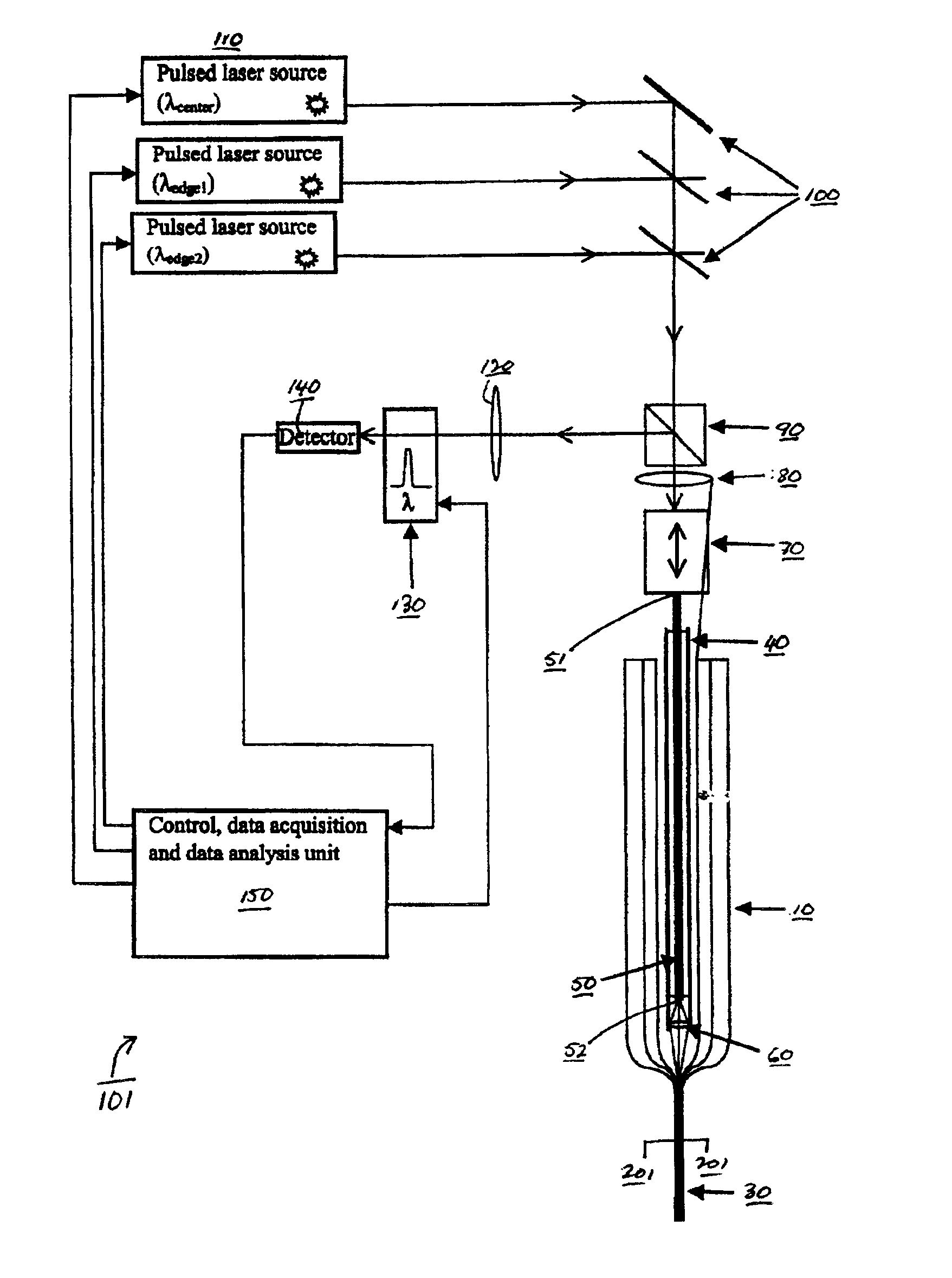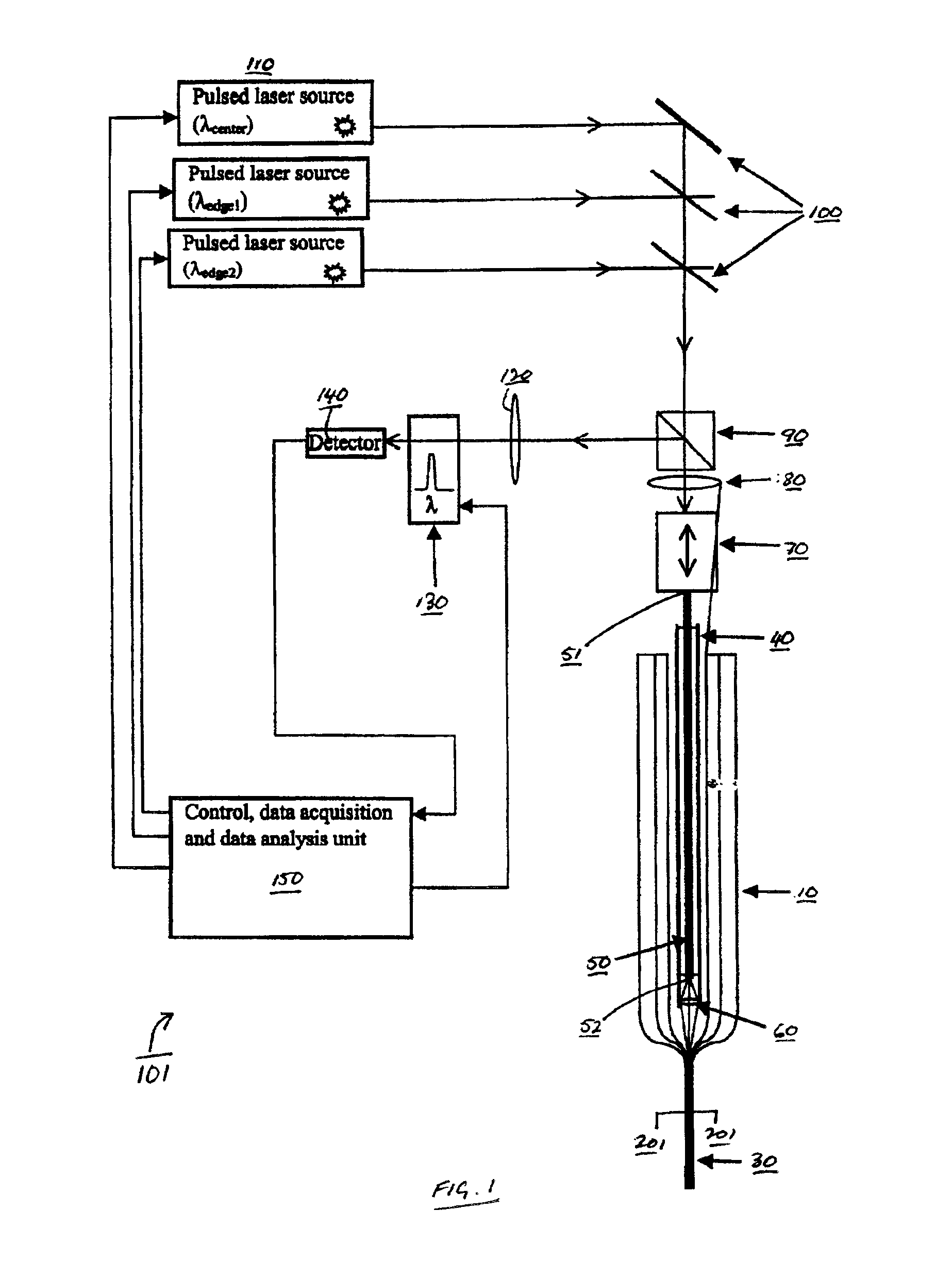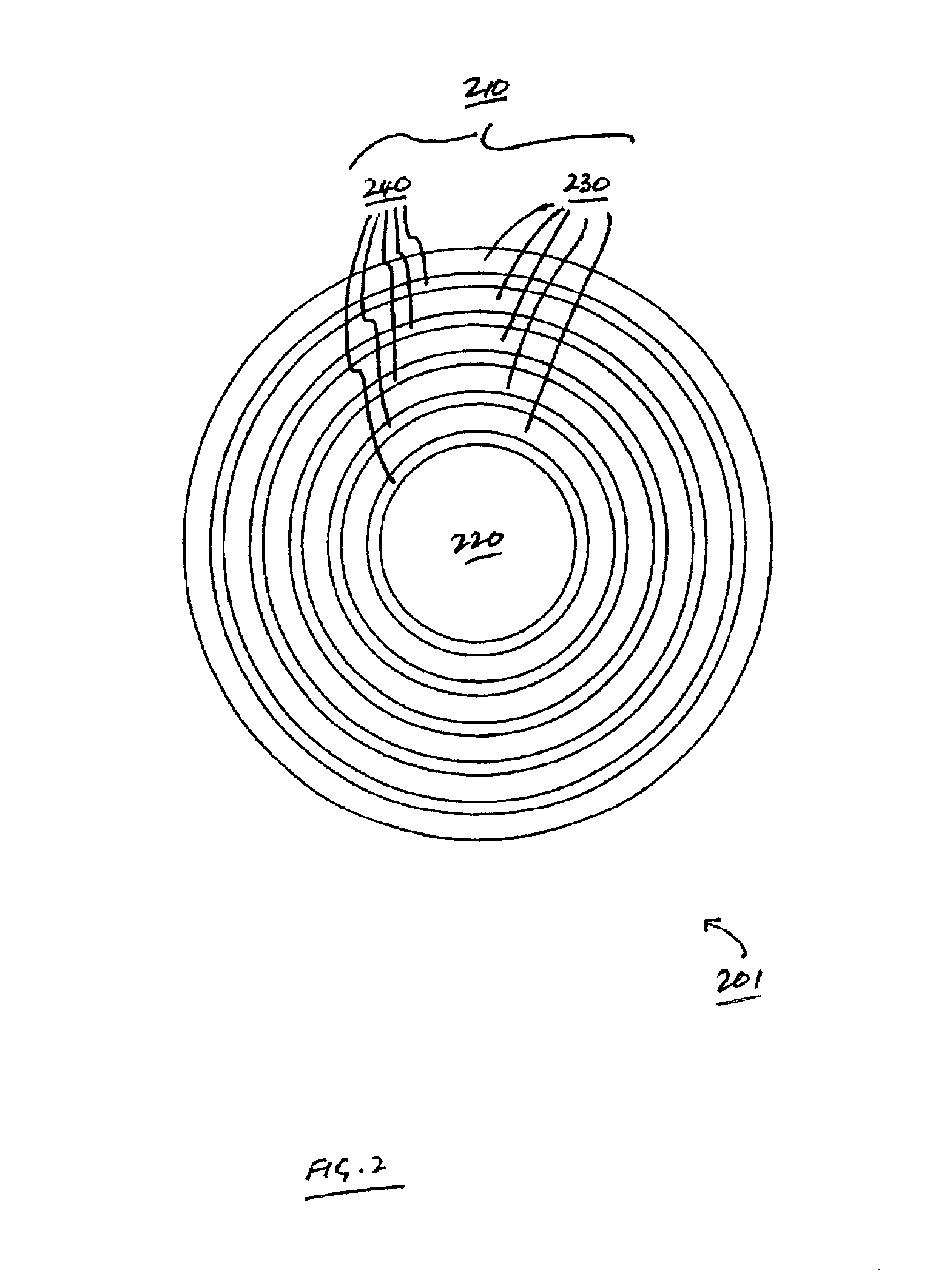Optical waveguide monitoring
- Summary
- Abstract
- Description
- Claims
- Application Information
AI Technical Summary
Benefits of technology
Problems solved by technology
Method used
Image
Examples
Embodiment Construction
The invention features methods for detecting defects in and monitoring the transmission loss of an optical waveguide, during, for example, drawing or cabling of an optical waveguide. For example, the invention relates to monitoring the quality (e.g., monitoring transmission loss and detecting structural and compositional defects) of optical waveguides that utilize photonic bandgap confinement mechanisms for guiding light (referred to here as photonic crystal fibers), including hollow fibers. In general, defects refer to any structural, compositional or other perturbation of the fiber from its ideal design, which can affect the optical and / or mechanical performance and reliability of the fiber. Examples of defects include perturbations to core radius, perturbations to the layer thickness, delamination between layers, bubbles, particle inclusions in the core or layers, and compositional variations in the layers affecting the refractive index of the layers.
Fiber monitoring is performed...
PUM
 Login to View More
Login to View More Abstract
Description
Claims
Application Information
 Login to View More
Login to View More - R&D
- Intellectual Property
- Life Sciences
- Materials
- Tech Scout
- Unparalleled Data Quality
- Higher Quality Content
- 60% Fewer Hallucinations
Browse by: Latest US Patents, China's latest patents, Technical Efficacy Thesaurus, Application Domain, Technology Topic, Popular Technical Reports.
© 2025 PatSnap. All rights reserved.Legal|Privacy policy|Modern Slavery Act Transparency Statement|Sitemap|About US| Contact US: help@patsnap.com



